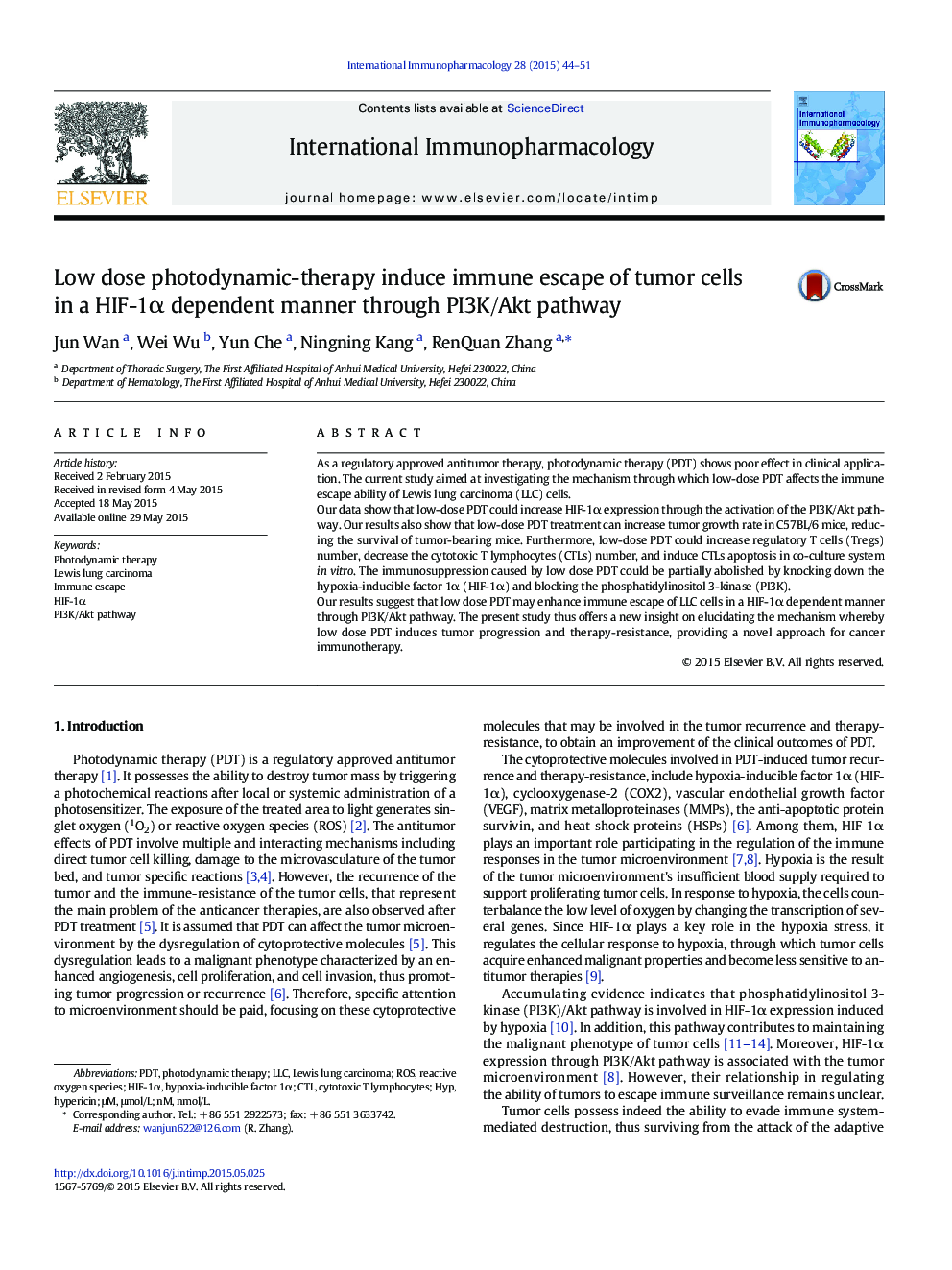| Article ID | Journal | Published Year | Pages | File Type |
|---|---|---|---|---|
| 2540426 | International Immunopharmacology | 2015 | 8 Pages |
•Low-dose PDT promotes tumor growth and shortens the survival of tumor-bearing mice.•Low-dose PDT increases HIF-1α expression through activating PI3K/Akt pathway.•Low-dose PDT reduces the number of CTLs and induces CTLs apoptosis in vitro.•The low-dose-PDT caused immunosuppression is partly due to PI3K/Akt activation.
As a regulatory approved antitumor therapy, photodynamic therapy (PDT) shows poor effect in clinical application. The current study aimed at investigating the mechanism through which low-dose PDT affects the immune escape ability of Lewis lung carcinoma (LLC) cells.Our data show that low-dose PDT could increase HIF-1α expression through the activation of the PI3K/Akt pathway. Our results also show that low-dose PDT treatment can increase tumor growth rate in C57BL/6 mice, reducing the survival of tumor-bearing mice. Furthermore, low-dose PDT could increase regulatory T cells (Tregs) number, decrease the cytotoxic T lymphocytes (CTLs) number, and induce CTLs apoptosis in co-culture system in vitro. The immunosuppression caused by low dose PDT could be partially abolished by knocking down the hypoxia-inducible factor 1α (HIF-1α) and blocking the phosphatidylinositol 3-kinase (PI3K).Our results suggest that low dose PDT may enhance immune escape of LLC cells in a HIF-1α dependent manner through PI3K/Akt pathway. The present study thus offers a new insight on elucidating the mechanism whereby low dose PDT induces tumor progression and therapy-resistance, providing a novel approach for cancer immunotherapy.
